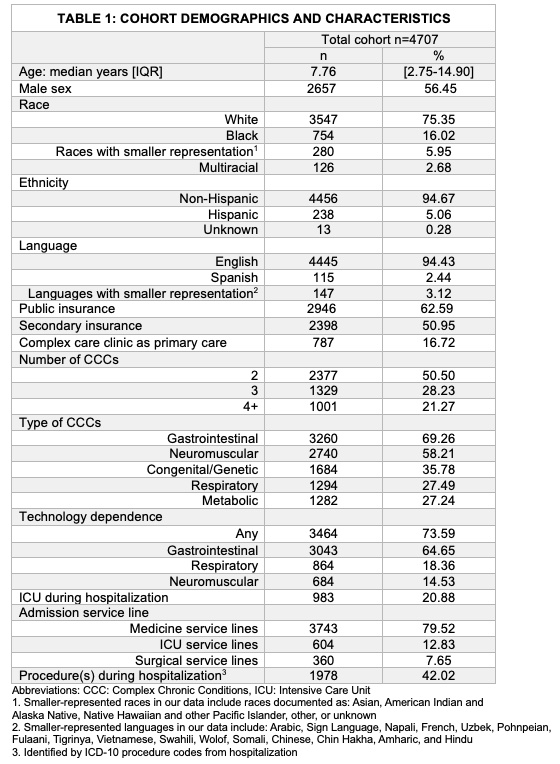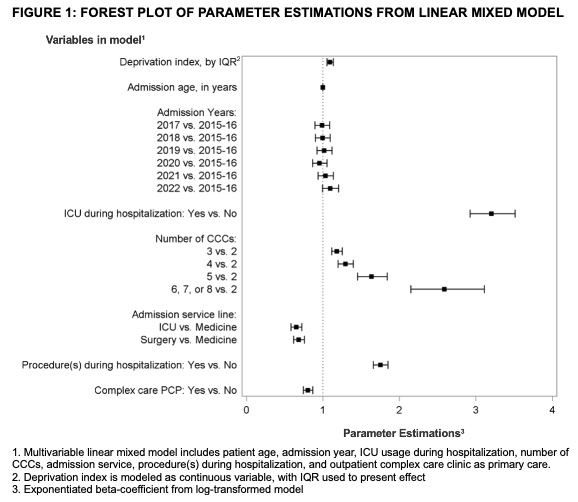Children with Chronic Conditions
Session: Children with Chronic Conditions 1
261 - Neighborhood socioeconomic deprivation and hospital length of stay in children with medical complexity
Friday, May 3, 2024
5:15 PM - 7:15 PM ET
Poster Number: 261
Publication Number: 261.287
Publication Number: 261.287

Amanda Warniment, MD (she/her/hers)
Hospital Medicine Fellow
Cincinnati Children's Hospital Medical Center
Mason, Ohio, United States
Presenting Author(s)
Background: Children with medical complexity (CMC) experience hospital lengths of stay (LOS) with averages as high as 12.5 days, which is much longer than the average of < 2 days for children without medical complexity. Family financial and social hardships may affect discharge timing in this population. Neighborhood socioeconomic deprivation (a measure of poverty, housing insecurity, and lack of healthcare access) has been associated with other disadvantageous health outcomes, but it’s association with LOS for CMC remains unexplored.
Objective: To evaluate the association between neighborhood socioeconomic deprivation and hospital LOS in CMC.
Design/Methods: This retrospective single center cohort study included children 0-21 years old with 2 or more chronic diseases identified using the ICD-10 complex chronic conditions (CCCv2) classification who were discharged from Hospital Medicine inpatient services between 2016-2022. We excluded children who were admitted to the neonatal intensive care unit due to expected prolonged LOS. We also excluded children who died. Our primary exposure was the neighborhood socioeconomic deprivation index, obtained by geocoding home address at time of hospitalization to 2010 US census tract data to calculate a score between 0-1 (higher scores indicating more neighborhood deprivation). Primary outcome was hospital LOS. Multivariable linear mixed models of log-transformed LOS accounted for pre-determined covariates and within patient clustering.
Results: The cohort included 4707 encounters from 2194 children (Table 1). Median neighborhood socioeconomic deprivation score was 0.33 (Range 0.10-0.81, IQR: 0.25-0.42) and median LOS was 3.30 days (Range 0.06-567.17 days, IQR: 1.86-6.93 days). In adjusted analysis, for each 0.1 increase in the neighborhood socioeconomic deprivation score, LOS increased 1.05-fold (p < 0.001, Figure 1). For example, for a child in a neighborhood with a deprivation score of 0.25, predicted LOS was 4.7 days while children in a neighborhood with a deprivation score of 0.42 had a predicted LOS of 5.1 days.
Conclusion(s): CMC from neighborhoods with greater socioeconomic deprivation had longer hospitalizations. Though severity of illness and complexity of patient care in this population are likely large contributors to prolonging hospitalizations, these results highlight potential inequities in access to care, basic necessities to care for these children (i.e., stable housing, financial support), and biases that exist at institutional and medical system levels that may contribute to prolonging hospitalizations.


